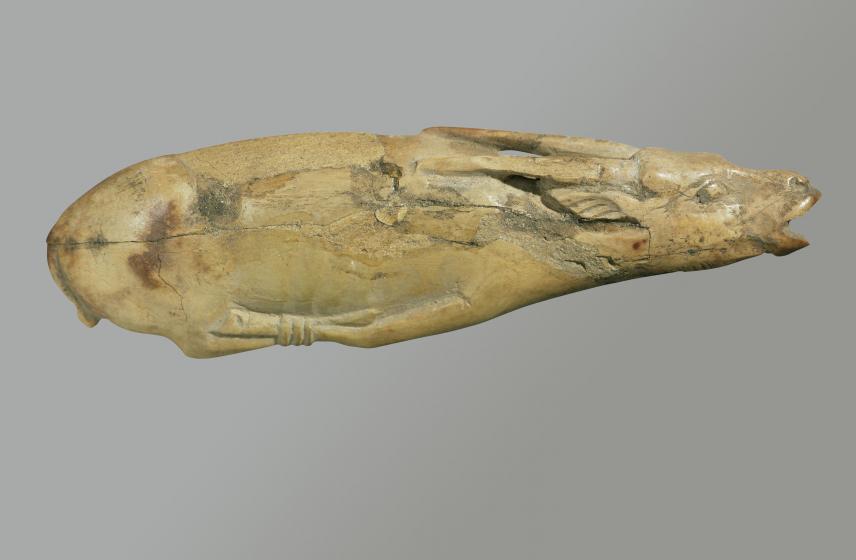Cosmetics spoon in the shape of an oryx
Information sur l’artiste
Egypt

Cuillère à fard : oryx entravé, Nouvel Empire.
Image © Lyon MBA – Photo Alain Basset
Images of hobbled animals – especially the oryx – were often used in the design of beauty products in the 18th Dynasty under the reign of Amenhotep III and his successors.
The spoon is elongated, taking on the form of the bone from which it was carved. The animal is portrayed lying on its side, feet bound beneath its stomach. The artisan has taken care with the anatomical details: the long horns, the hairy ears, the ribs, the small tail, and the narrow hooves, as well as the rope tying the feet together. The head is delicately sculpted on both sides. The open mouth, whose tongue has probably been lost, illustrates the animal's bellow of distress as it sees death approaching.
On the reverse, the bowl of the spoon, carved out of the rounded part of the animal's body, would have been used to prepare an oily ointment, probably a form of antiseptic eye balm.
Egypt
New Kingdom, 18th Dynasty, circa 1400-1300 B.C.
Bone
L. 8.5; W. 2.5; D. 0.8 cm
Deposited by the Victor-Loret Institute of Egyptology of Lyon in 1988
Inv. G 17





